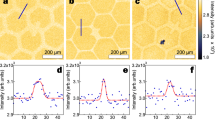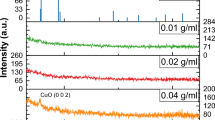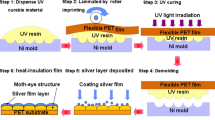Abstract
IT is common practice in the final stages of the manufacture of titanium dioxide pigments to apply coatings to the crystal surfaces, in order to reduce their photochemical activity and improve their dispersibility in various media. These coatings often take the form of 1–3 per cent of oxides or hydrated oxides precipitated in an aqueous dispersion of the pigment. It is important to know whether the products are truly coated pigments, merely mixtures of the pigment and coating material, or something between the two extremes. For a uniform coating, the thickness to be expected is about 50 Å, or one-fiftieth of the crystal diameter.
This is a preview of subscription content, access via your institution
Access options
Subscribe to this journal
Receive 51 print issues and online access
$199.00 per year
only $3.90 per issue
Buy this article
- Purchase on Springer Link
- Instant access to full article PDF
Prices may be subject to local taxes which are calculated during checkout
Similar content being viewed by others
References
Wilska, S., Farbe und Lack, 71, 39 (1965).
Author information
Authors and Affiliations
Rights and permissions
About this article
Cite this article
SMITH, H. Electron Microscopic Observation of Coatings on Titanium Dioxide Pigments. Nature 211, 292–293 (1966). https://doi.org/10.1038/211292a0
Issue Date:
DOI: https://doi.org/10.1038/211292a0
Comments
By submitting a comment you agree to abide by our Terms and Community Guidelines. If you find something abusive or that does not comply with our terms or guidelines please flag it as inappropriate.



